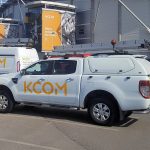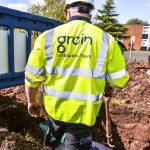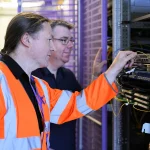Ookla Sees UK Fall in Global Rank for Mobile and Broadband Speeds
The latest data from broadband speed testing giant Ookla (Speedtest.net) has revealed that the United Kingdom is now ranked just 42nd in the world for fixed broadband ISP download speeds (61.75Mbps average) and a dismal 49th for mobile (30.93Mbps), which compares with 29th and 46th respectively in January 2018.
According to the company’s May 2019 data, the UK also delivered average fixed line upload speeds of 14.82Mbps (11.16Mbps on mobile). The situation means that the UK’s fixed line and mobile broadband (3G / 4G) performance is now decidedly mid-table and perilously close to the global average of all countries. We’re also further away than ever from the top 10, which continues to pull away.

Many people may be surprised to see a relatively wealthy country like the UK in such a position, not least when the expectation would probably be that we should be at least placing somewhere within the top 20 and not facing toward a fall into the bottom half of the world league table.
Advertisement
At least one of the reasons for this stems from the fact that other countries are much more advanced in their “full fibre” (FTTP) deployments, while countries like the UK and Germany have been slower to adapt (i.e. we were strong in the so-called “superfast” generation of hybrid fibre services but weak on full fibre). This is well illustrated by our awful FTTP and “ultrafast broadband” (100Mbps+) rankings within the EU (here and here).
The good news is that over the past couple of years this has begun to change and there’s now an increasingly rapid rollout of FTTP/H services (Summary of UK Full Fibre Plans), although it’s impossible to avoid the fact that deploying brand new infrastructure is an inherently slow and expensive process due to the need for extensive street works. In other words, it may be awhile before we get anywhere near that top 20 again (if ever).
At this point it’s important to note that Ookla has a tendency to weight their results more toward the positive side and thus their reported speeds can often appear somewhat inflated in comparison to other studies, not that this helps the UK in a global ranking where the same rule is applied to all counties.
Reports like this serve a useful purpose in that they help to keep track of change, particularly in terms of take-up via faster connectivity solutions. Nevertheless it’s also very important to take such reports with a pinch of salt and to avoid conflating them too closely with network availability, which is particularly relevant for fixed line providers.
Advertisement
For example, it’s estimated that fixed “superfast broadband” (24Mbps+) networks are available to almost 96% of UK premises (rising to around 98% by the end of 2020) and “ultrafast” covers nearly 60% (hopefully universal by 2033), although in reality many people have yet to upgrade (i.e. they cannot afford, are aware of or even feel the need to do so). Indeed around 35% of premises still take far slower copper ADSL lines, which is despite most now being within reach of faster networks.
Speed tests like this can also be impacted by other factors like poor home wiring, user choice of package (e.g. 1Gbps could be available but most people may still pick a slower and cheaper tier), local network congestion and slow home WiFi performance etc. Nevertheless, as stated earlier, such caveats are true for all of those countries in Ookla’s global ranking.
Mark is a professional technology writer, IT consultant and computer engineer from Dorset (England), he also founded ISPreview in 1999 and enjoys analysing the latest telecoms and broadband developments. Find me on X (Twitter), Mastodon, Facebook, BlueSky, Threads.net and Linkedin.
« UK ISP Andrews & Arnold Boost Broadband Usage and Cut Prices

















































Comments are closed